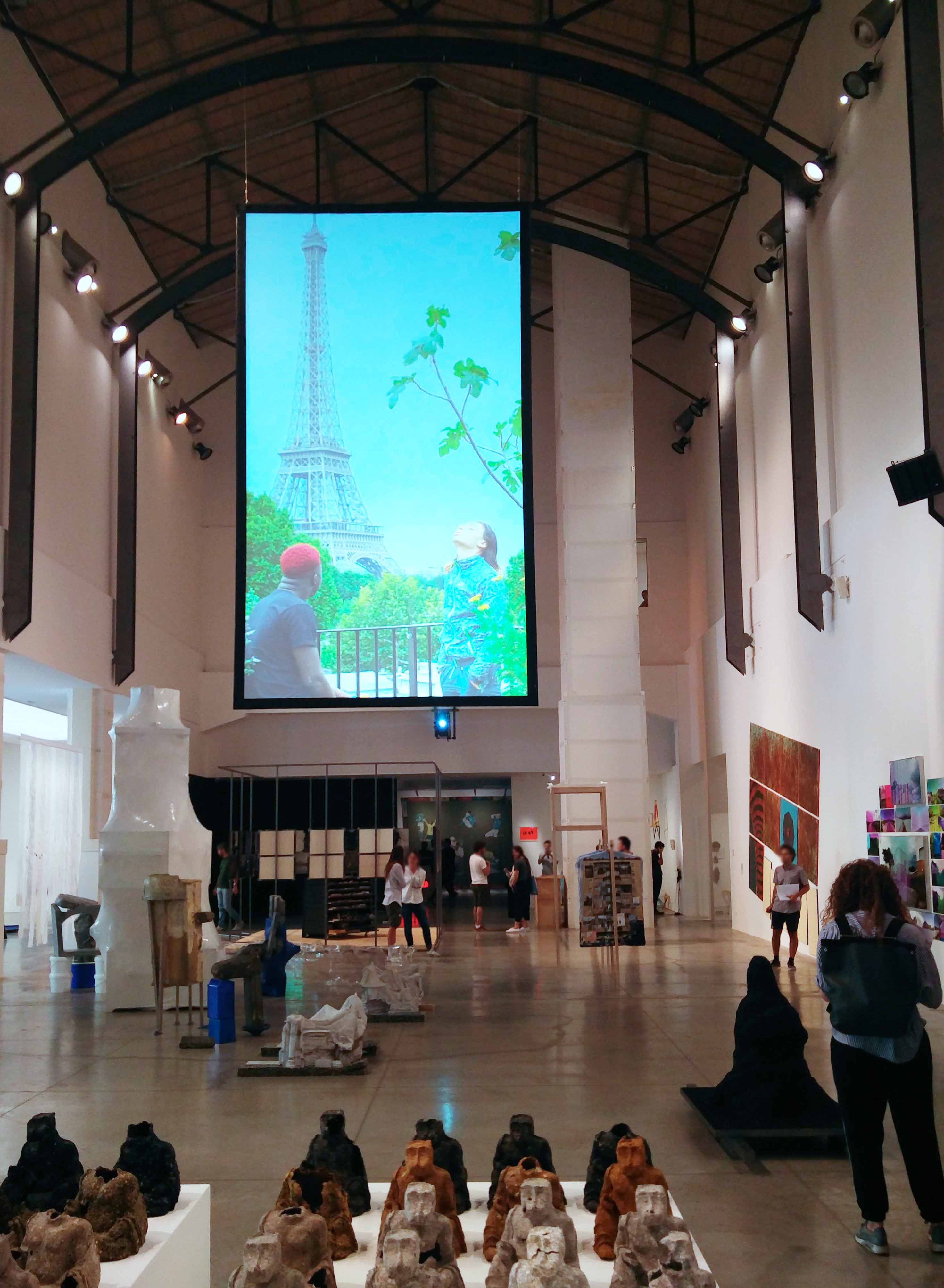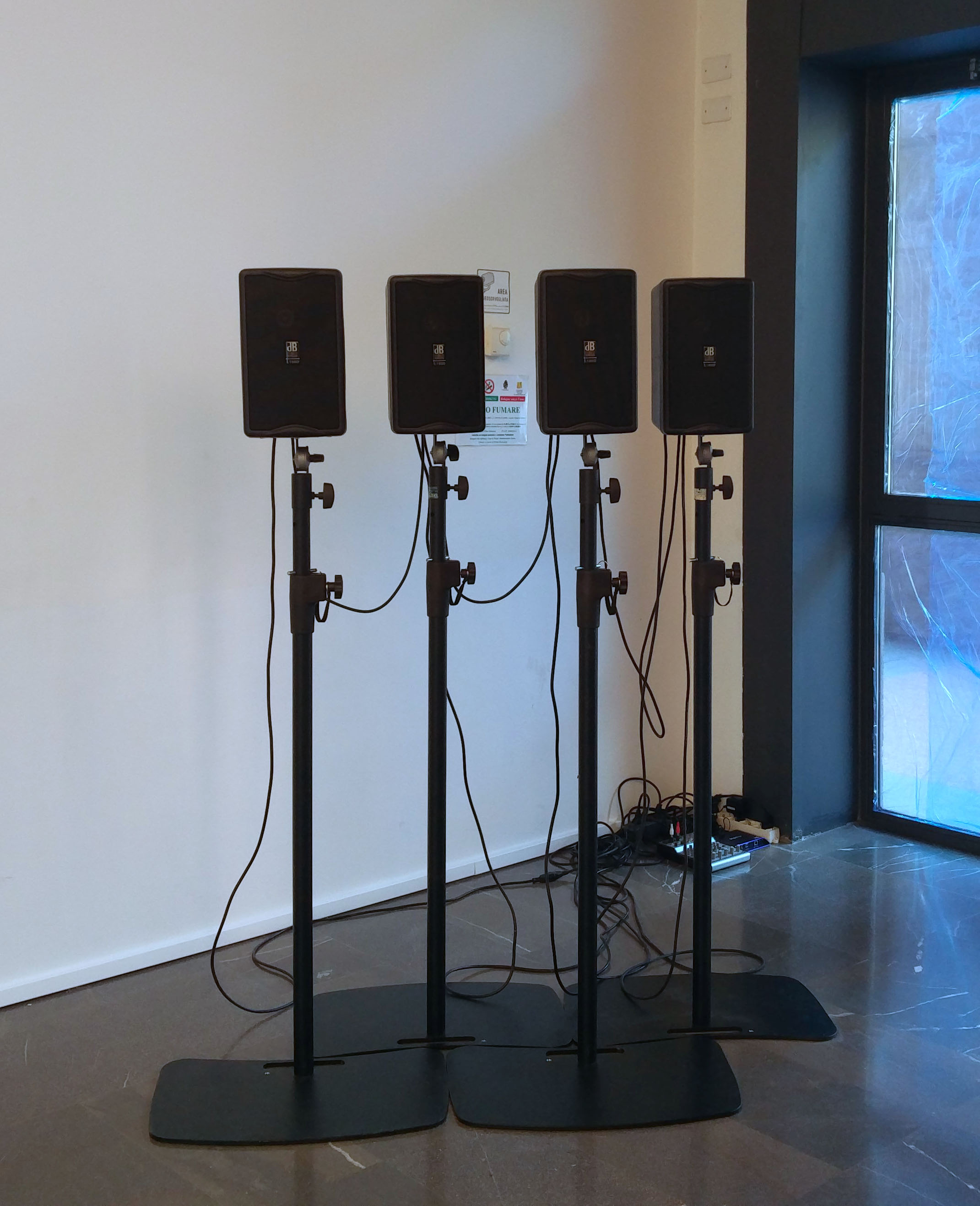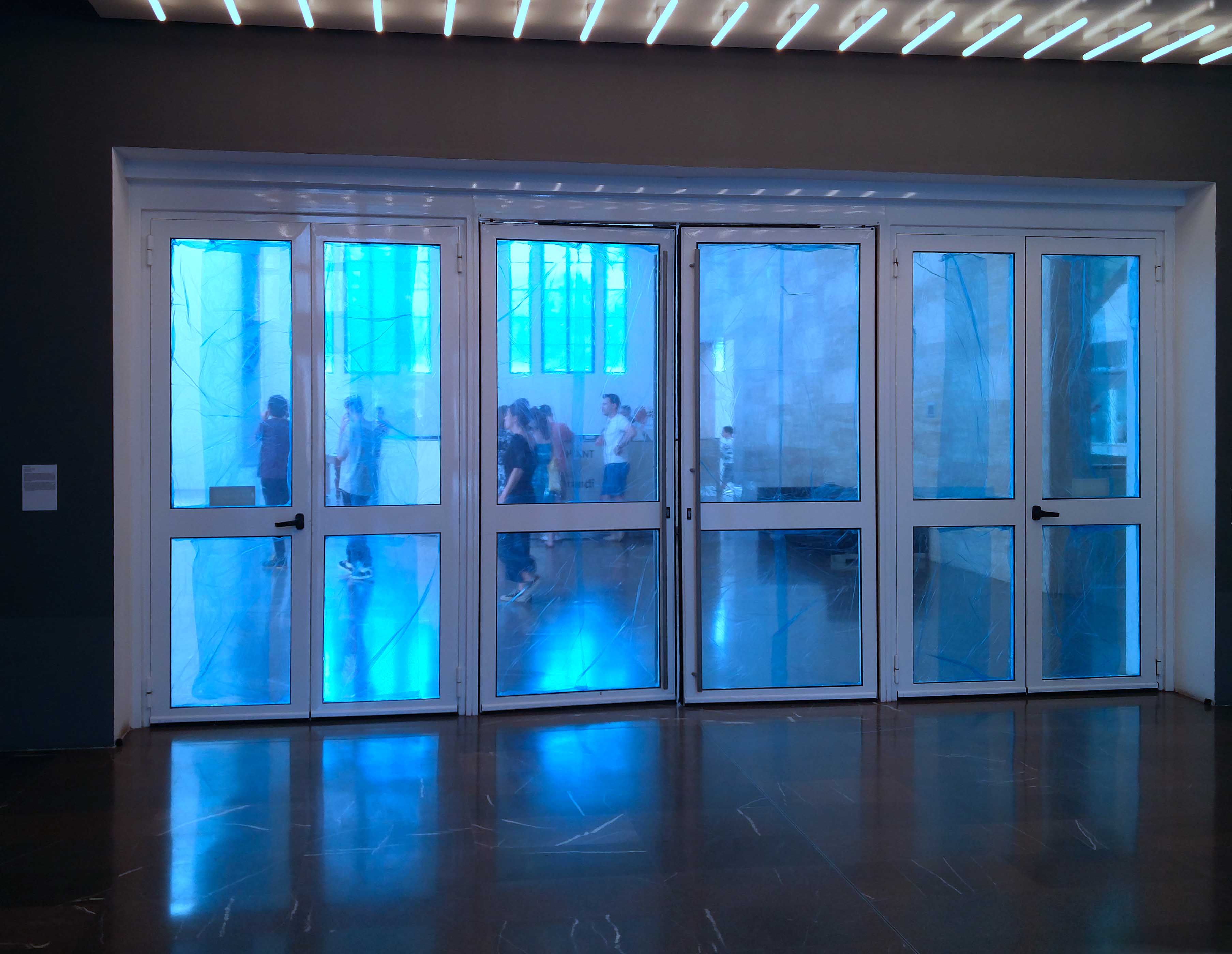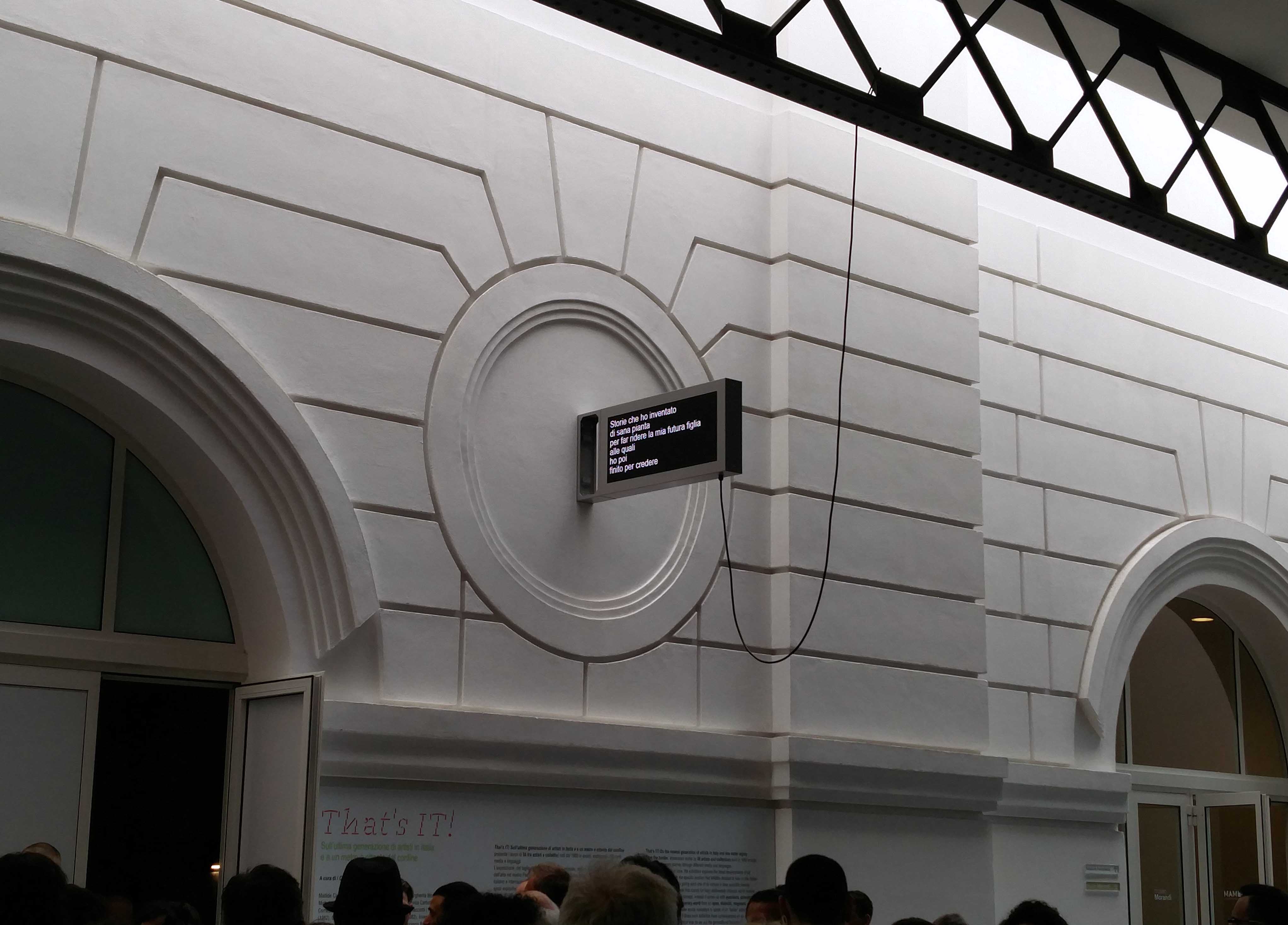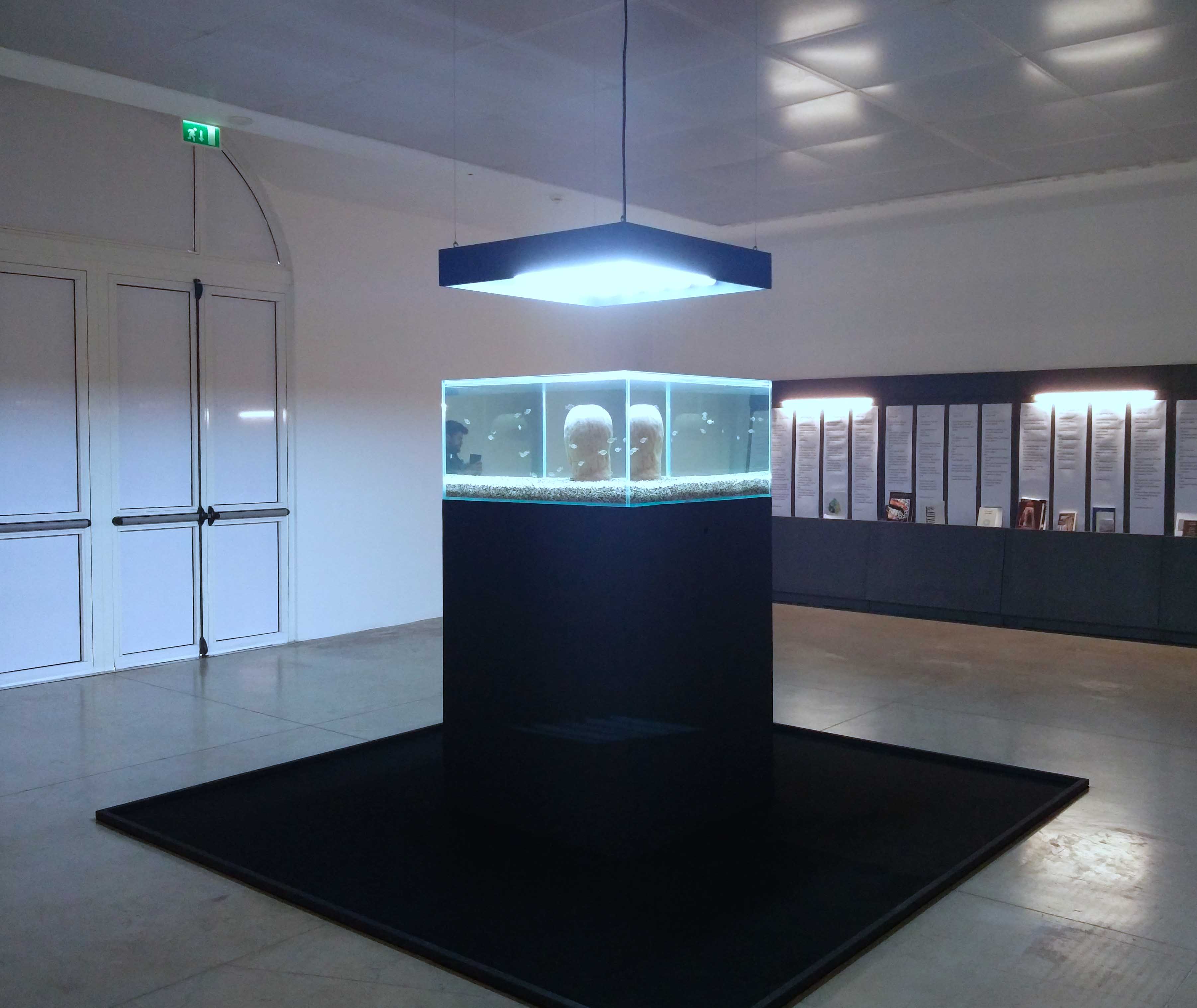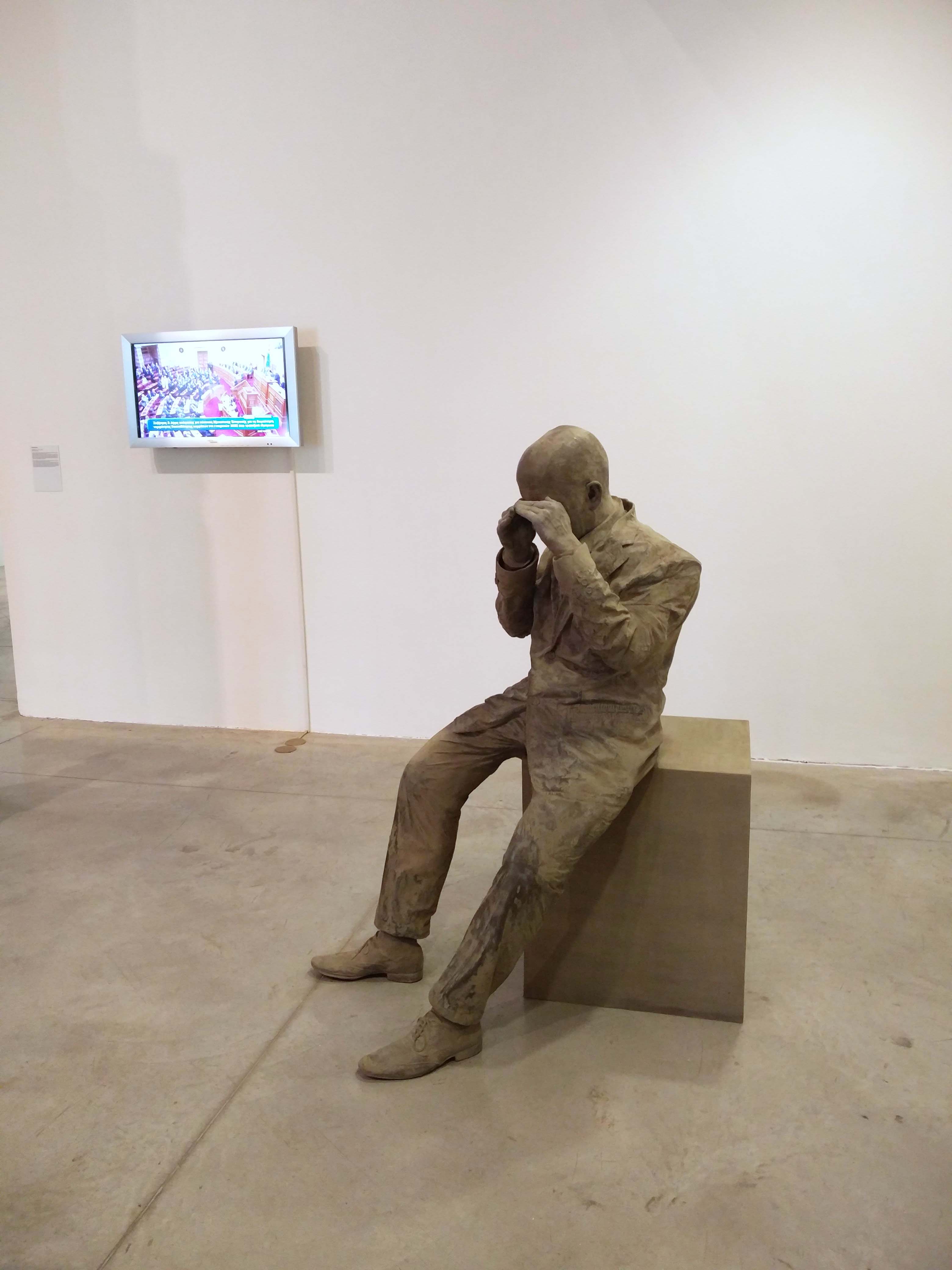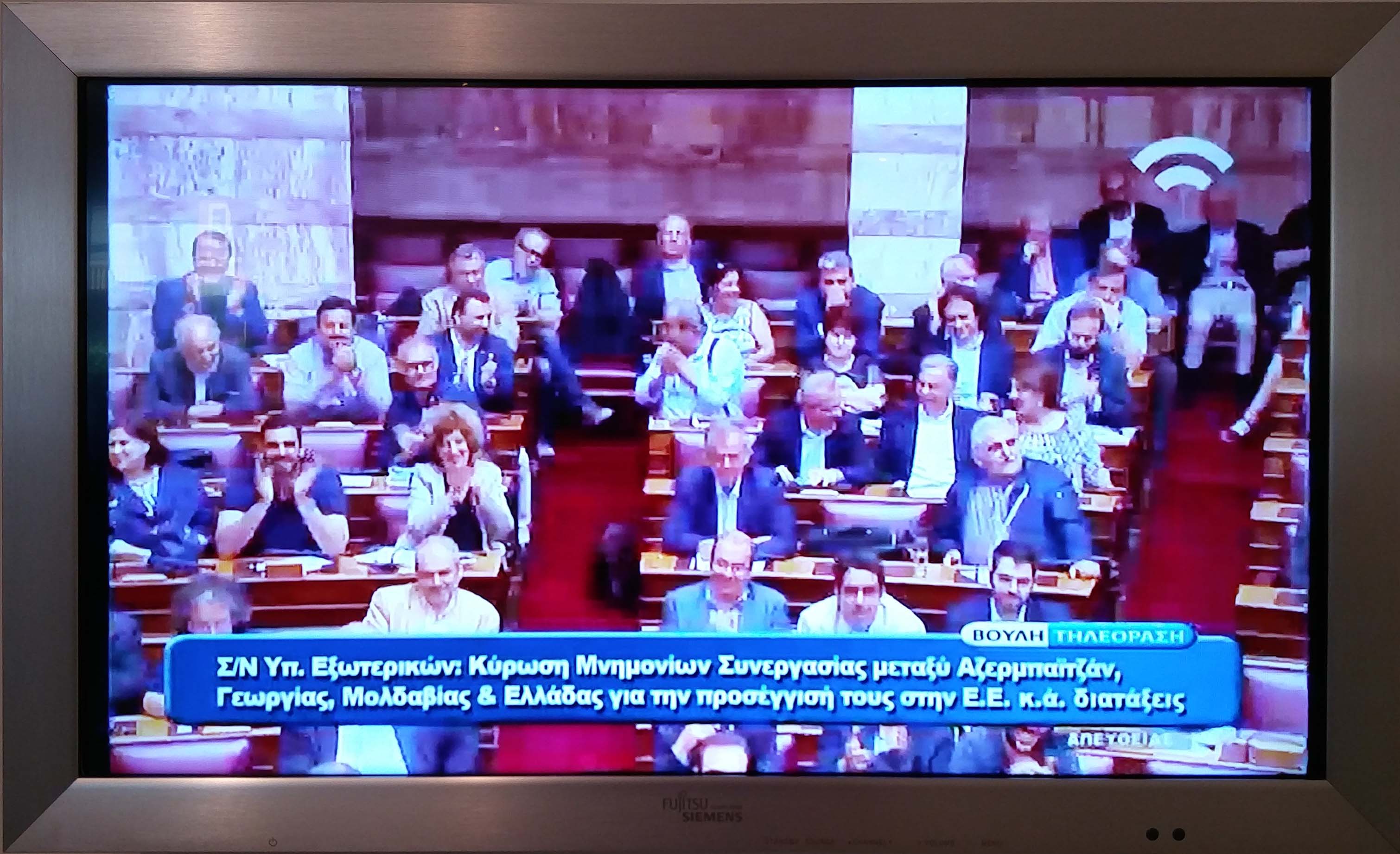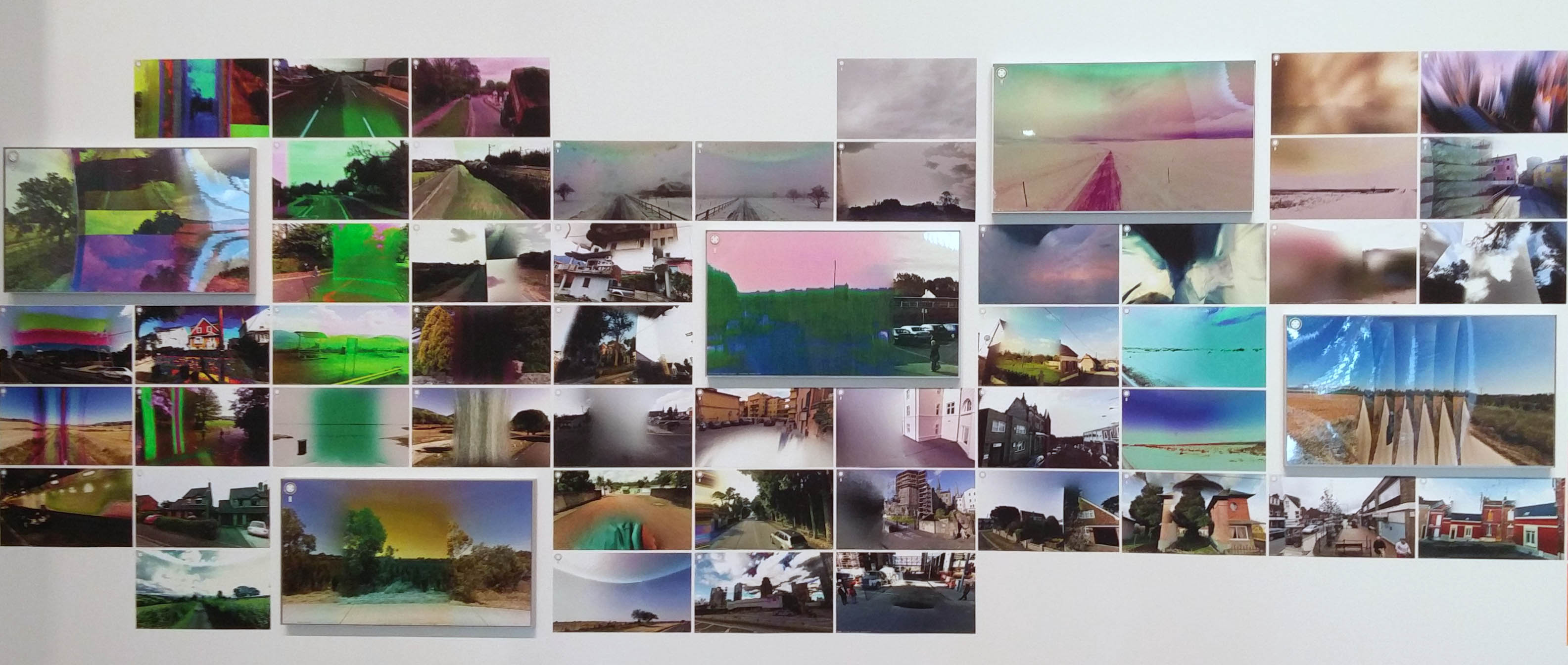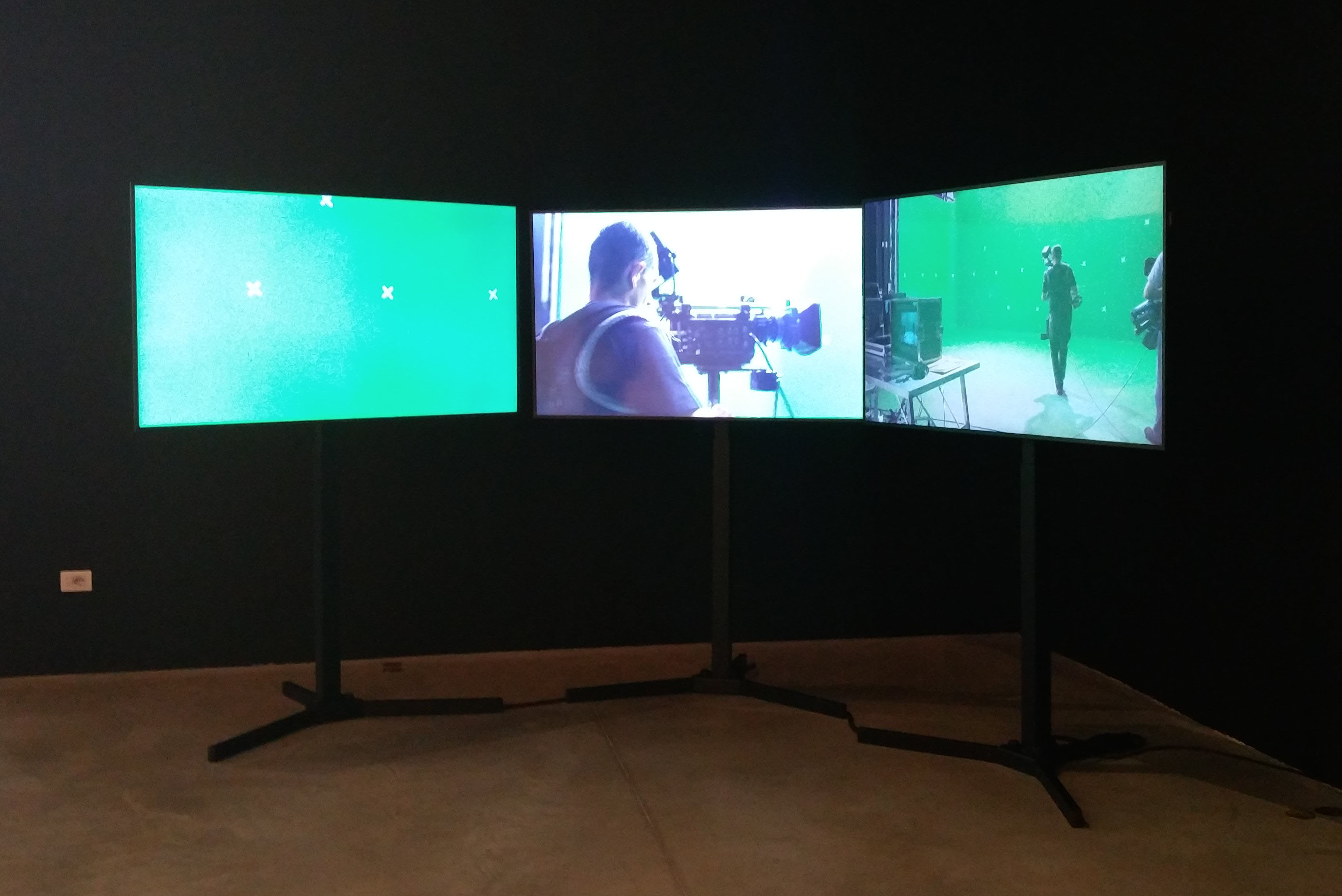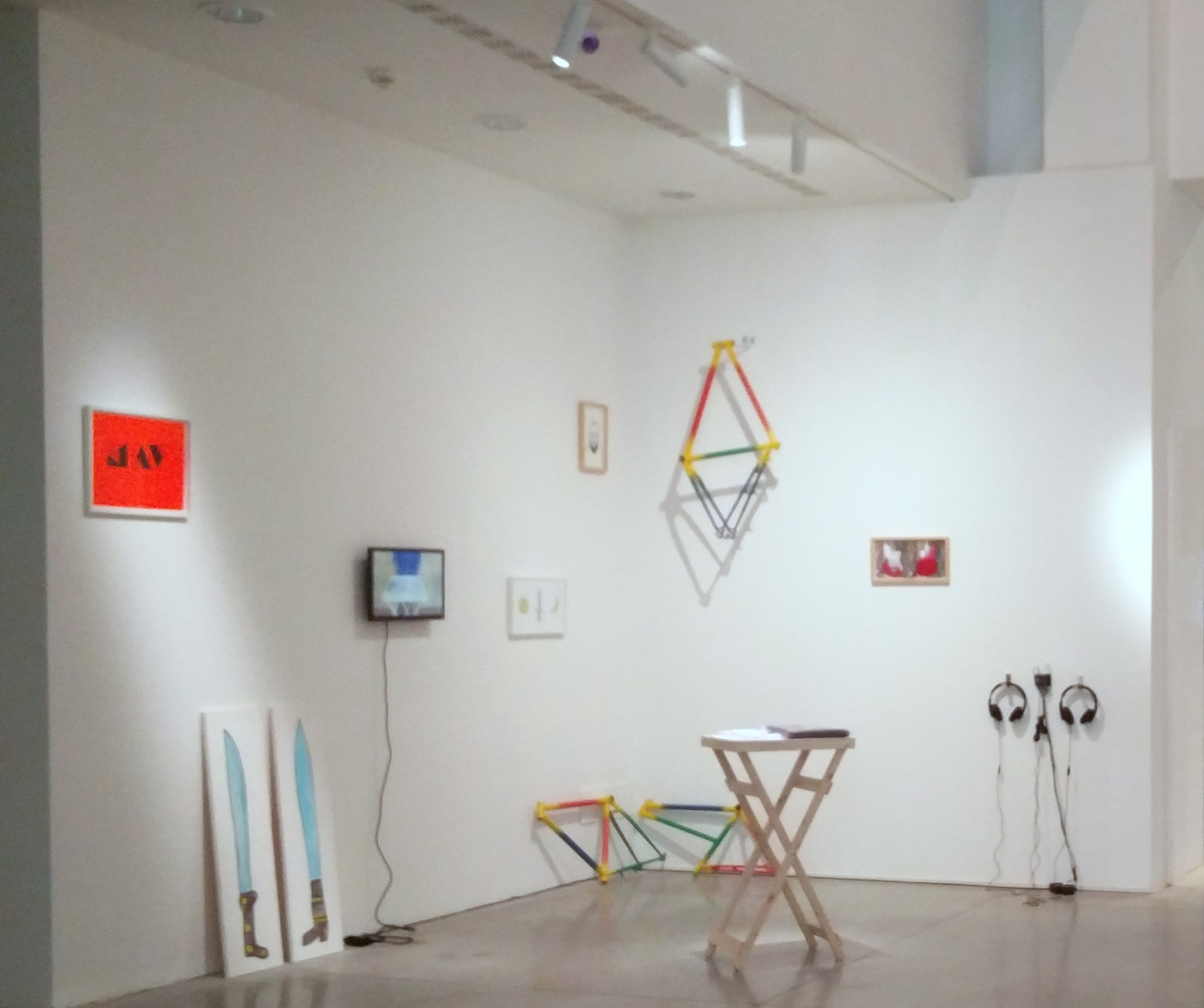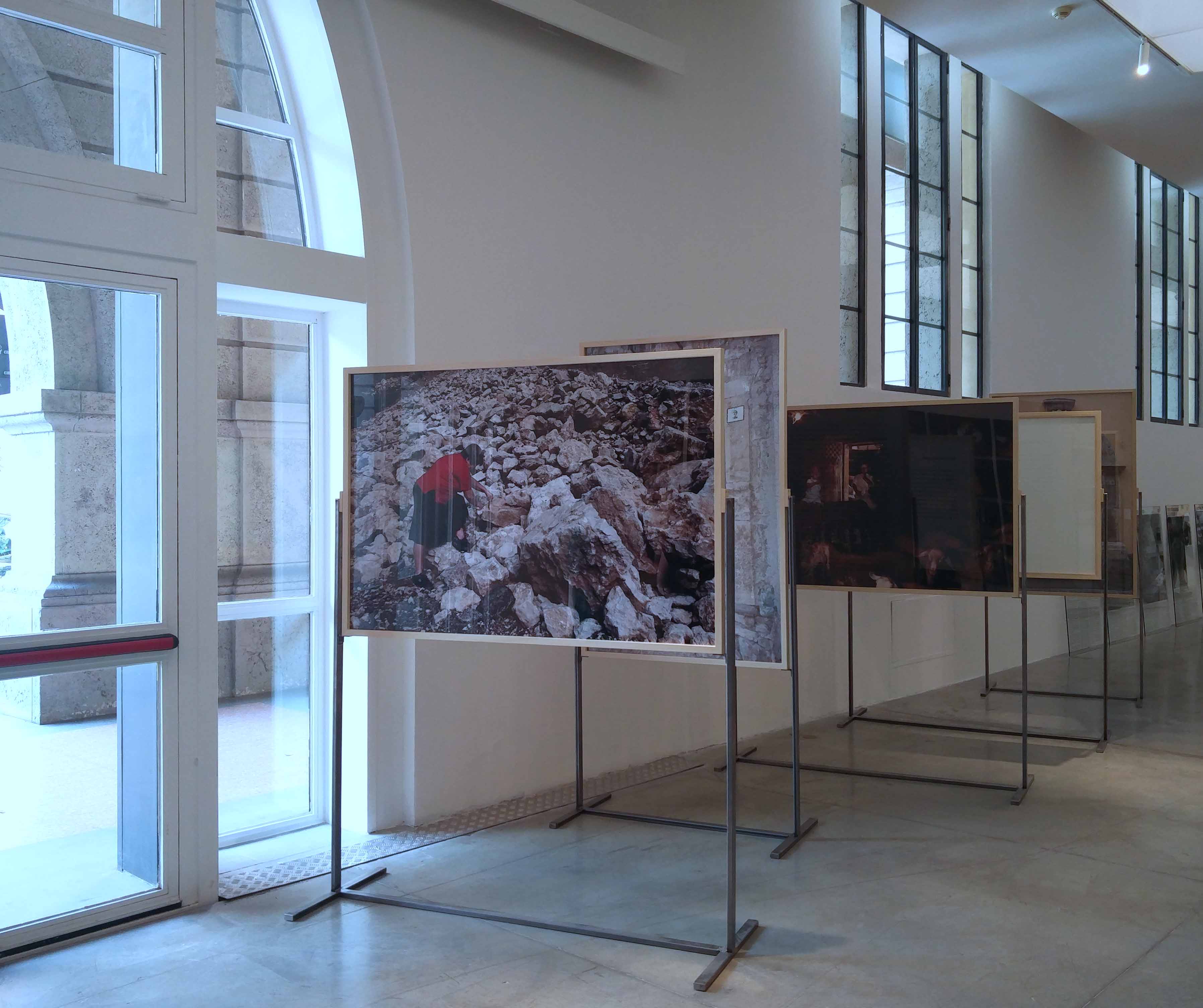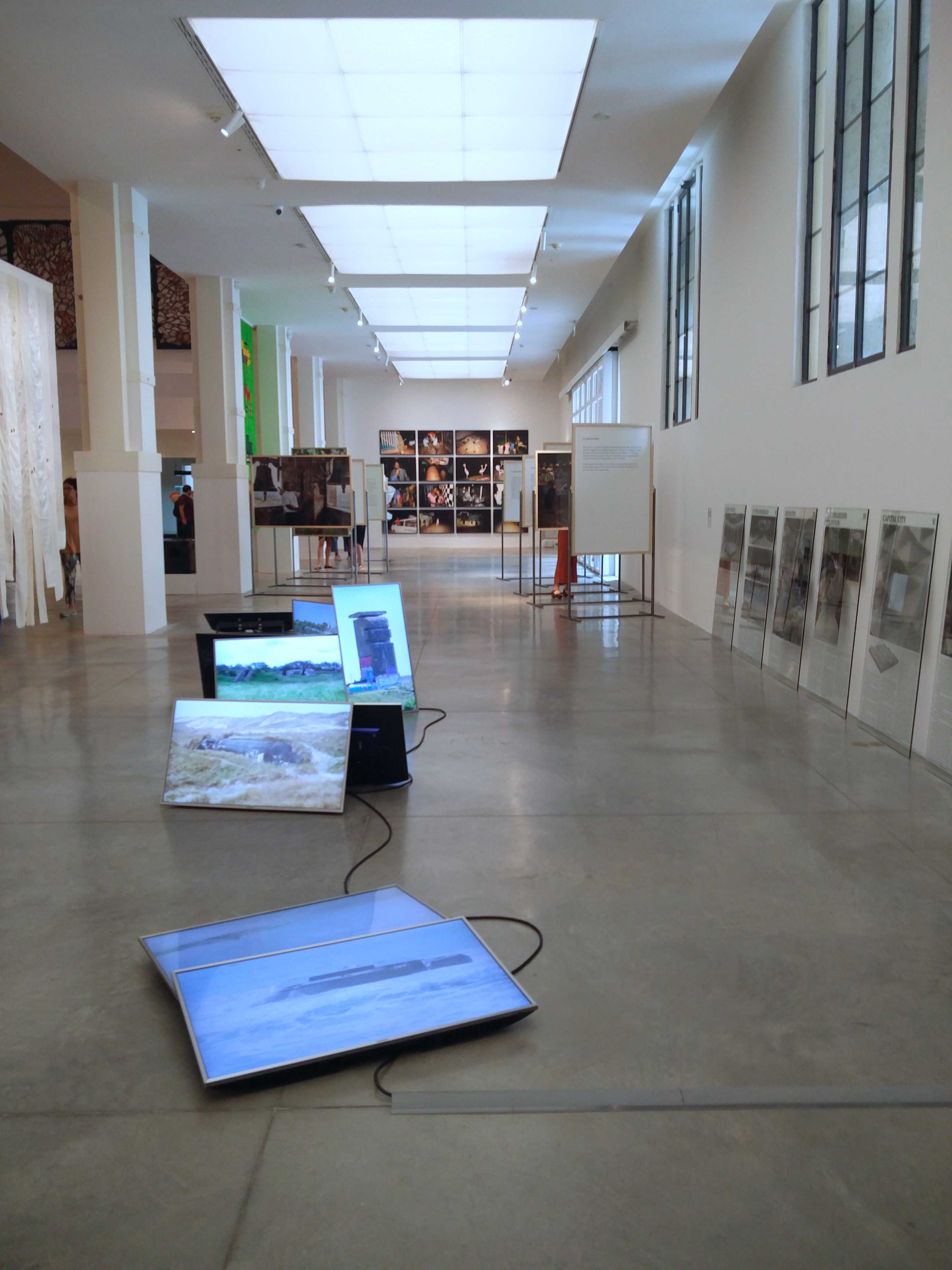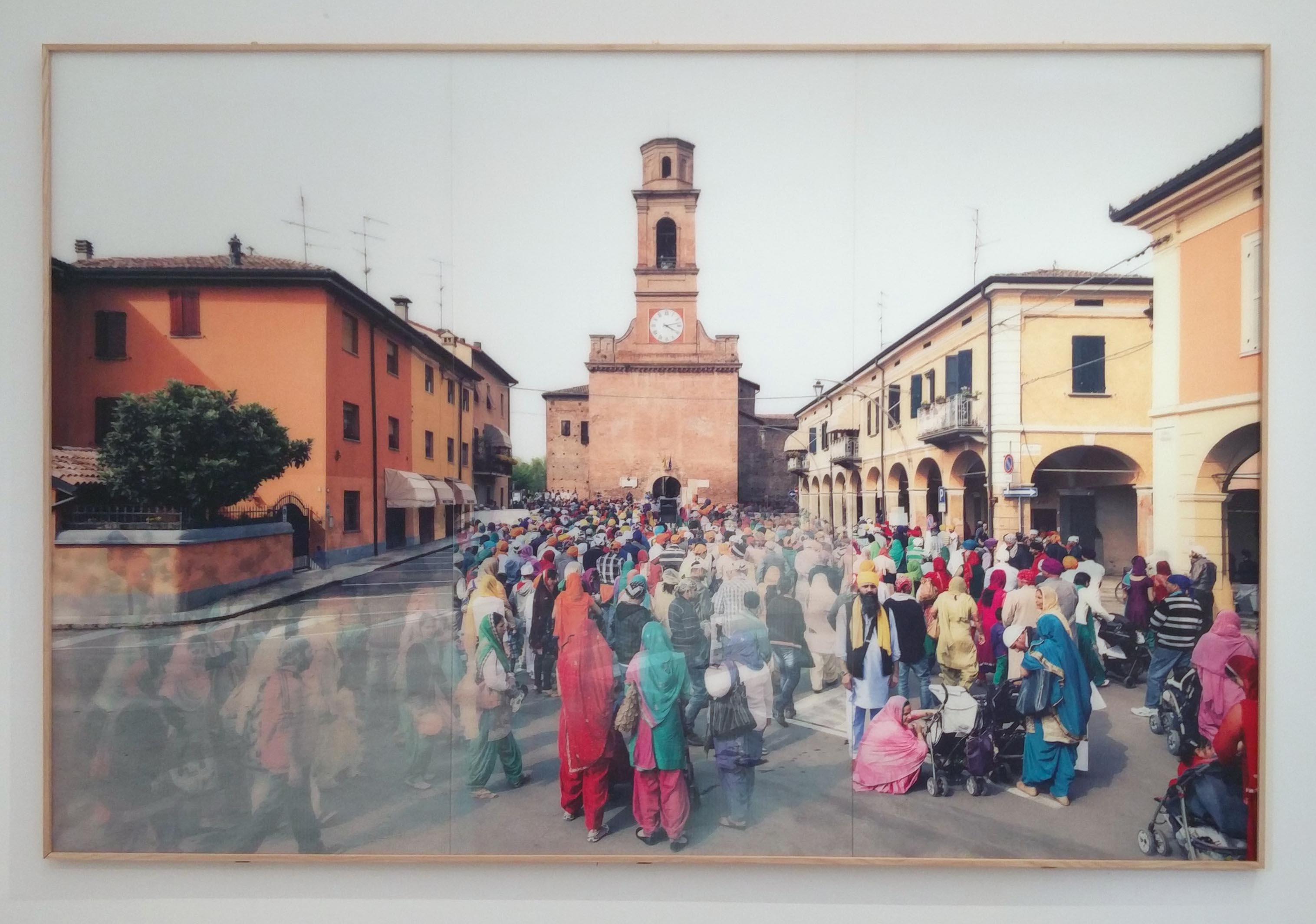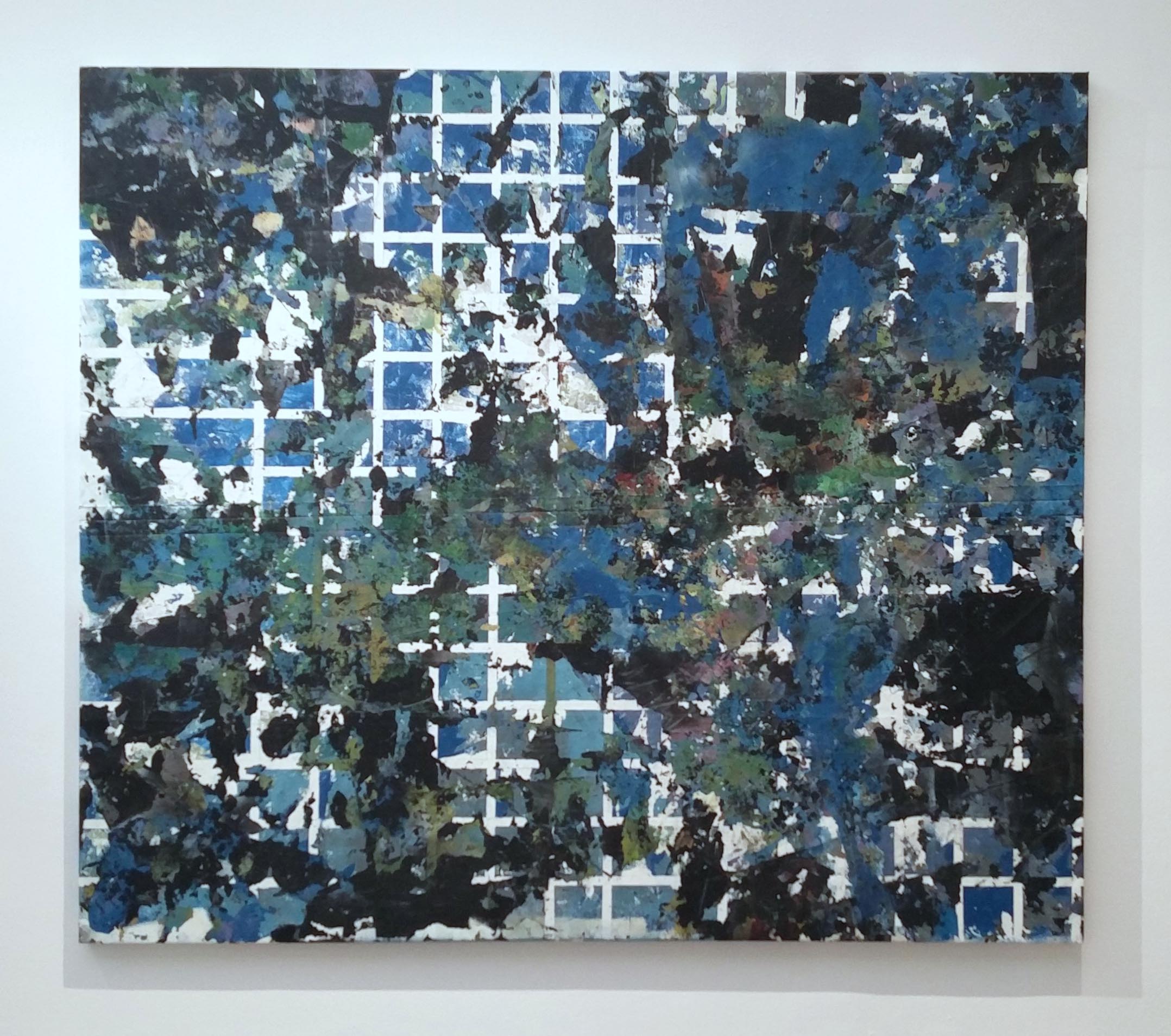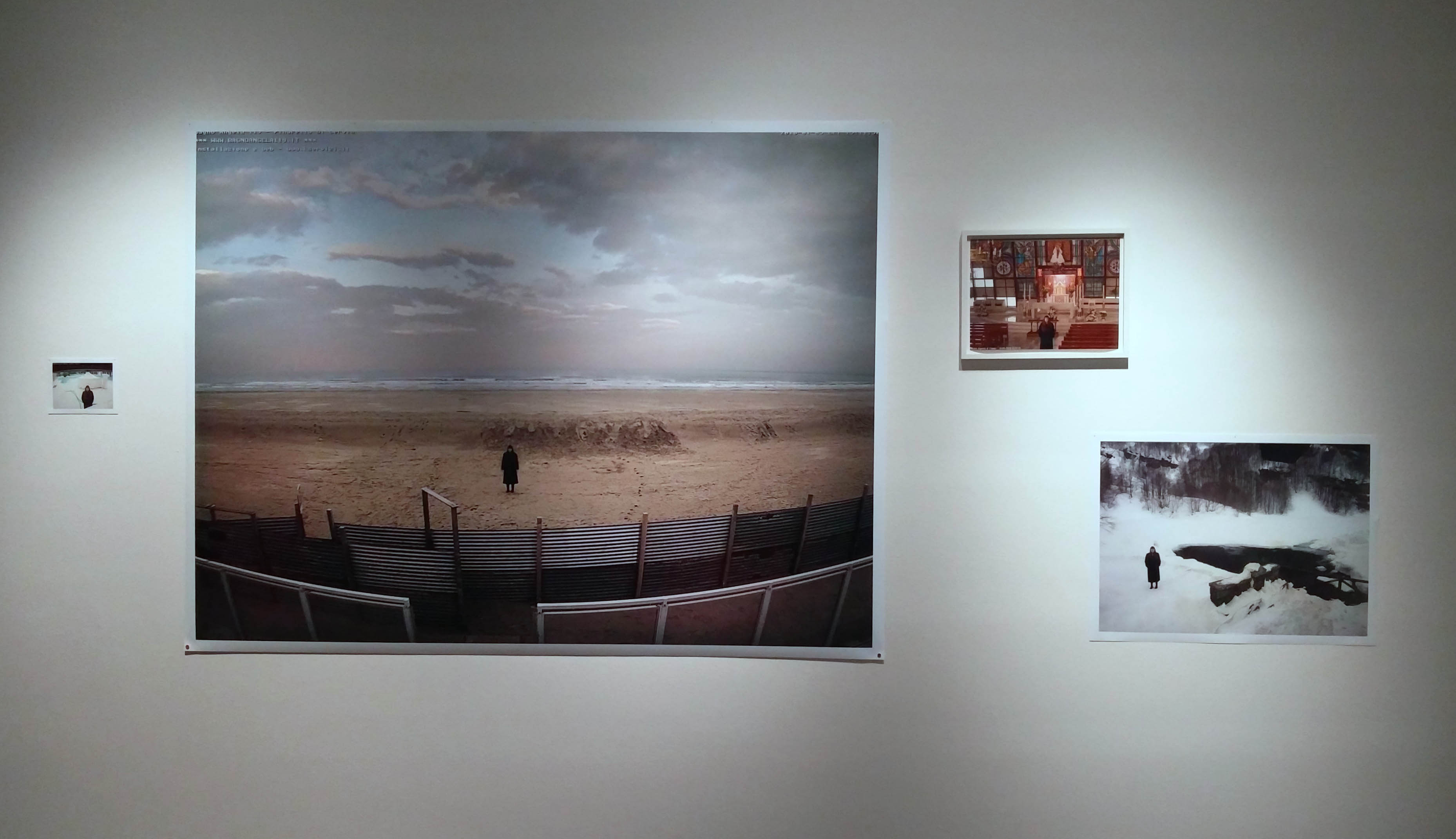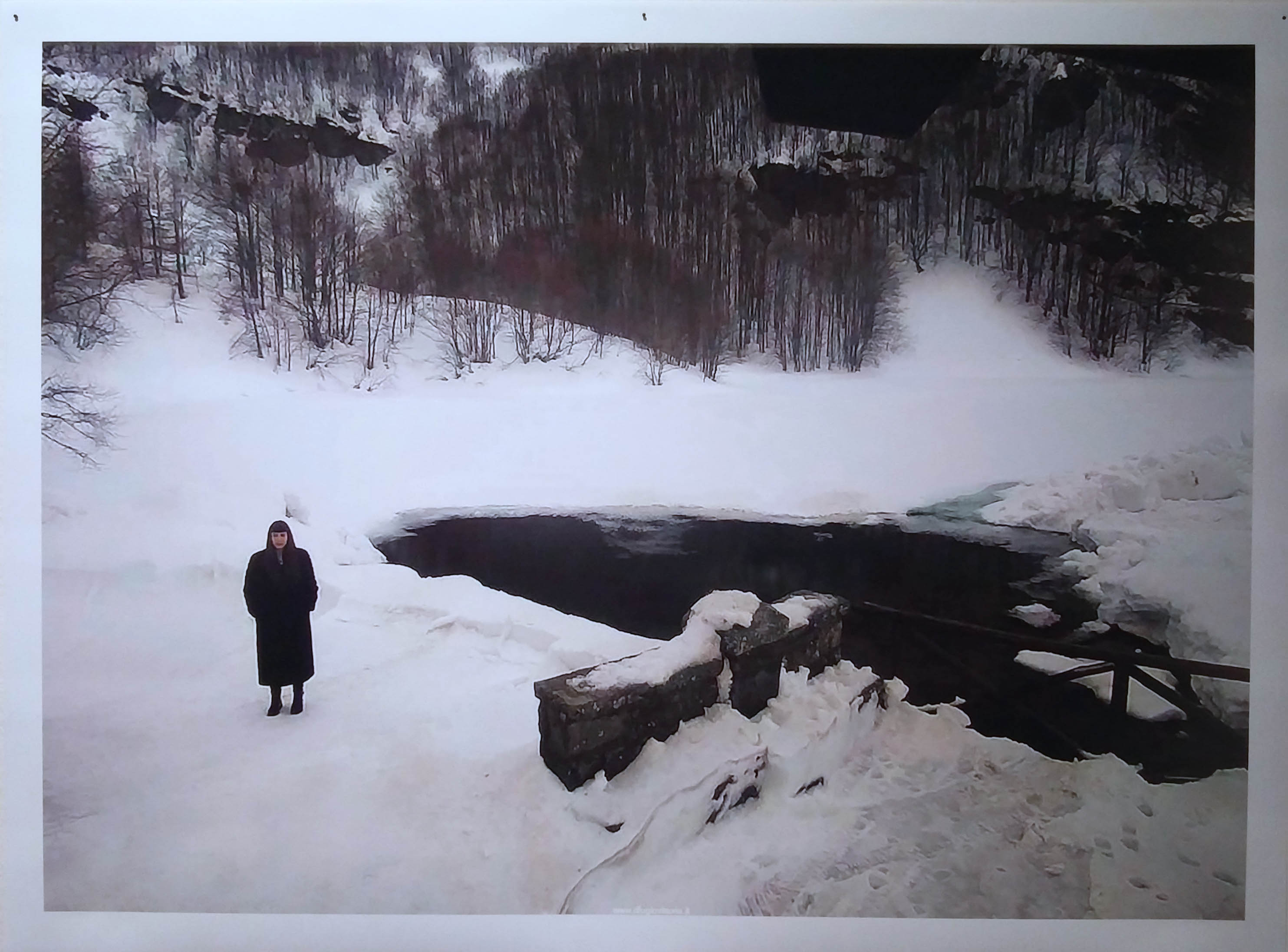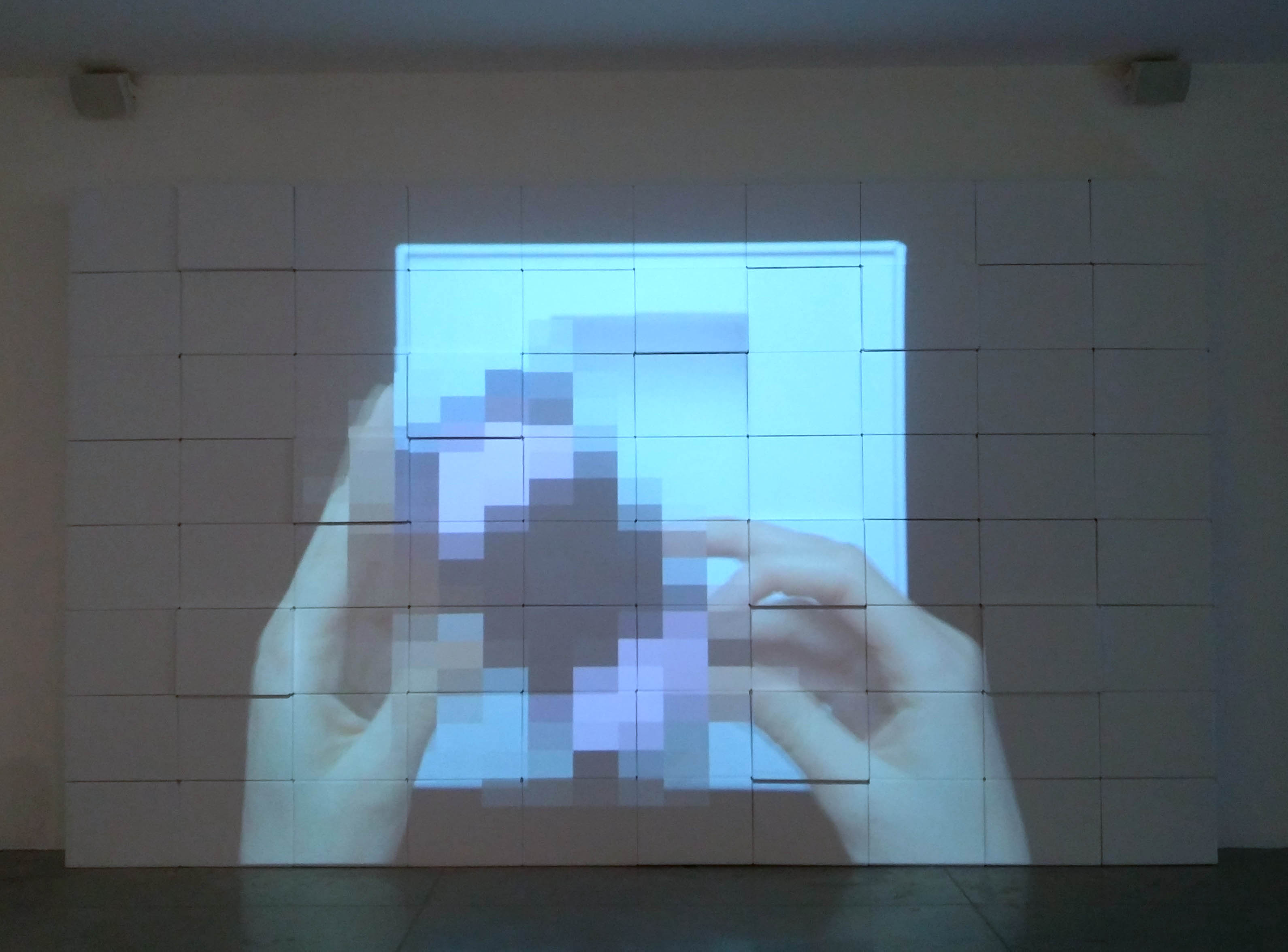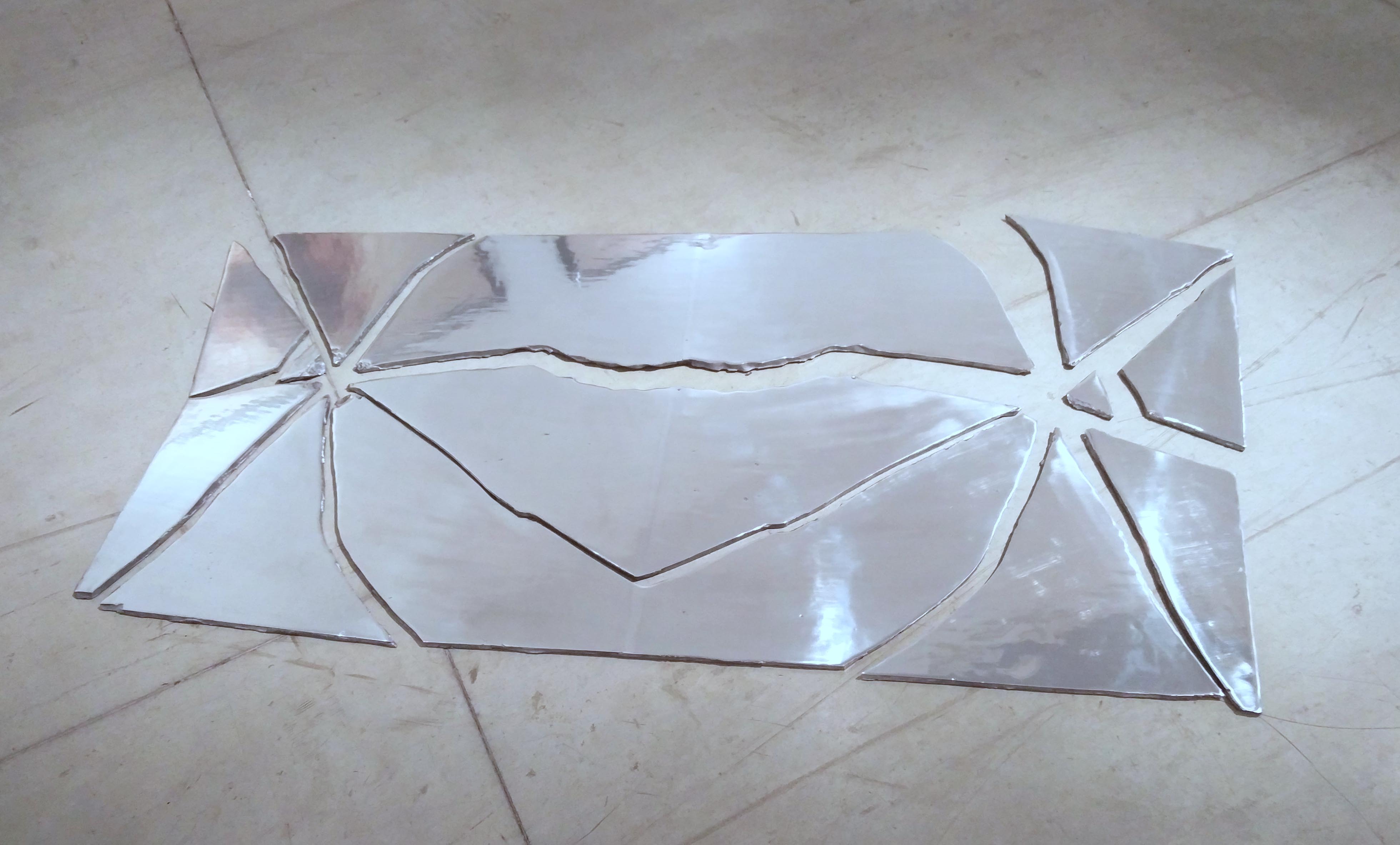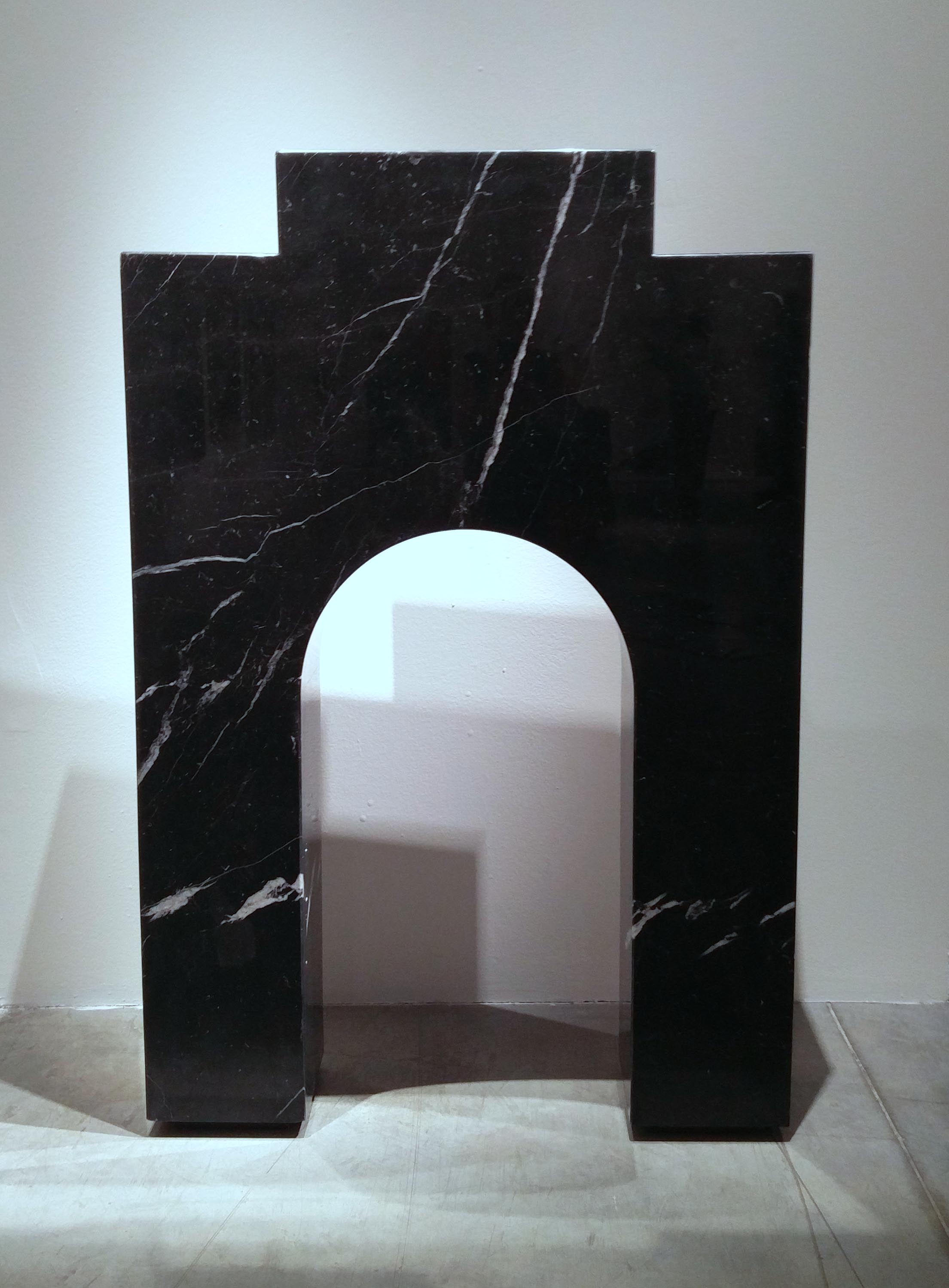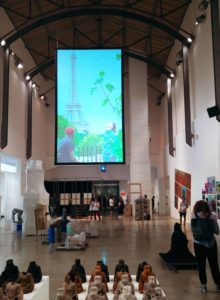 On the newest generation of artists in Italy and one meter and eighty from the border.
On the newest generation of artists in Italy and one meter and eighty from the border.
MAMbo (Museo d’Arte Moderna di Bologna)
Sala delle Ciminiere
Via Don Minzoni 14
Bologna
www.mambo-bologna.org
22 June – 11 November 2018
On 21 June, the MAMbo opened this year’s summer exhibition “That’s IT!”. The show is the first conceived under the leadership of the new artistic direction of Lorenzo Balbi. With the ambition to assemble oeuvres from the generation Millennium, the exhibition unites artworks from 56 artists and collectives born between 1980 and 1992. Included are all media, from the classical panel painting to sound installation. Most part of the artworks were specifically for the show and many of the artists participated in the installation. During this time, the museum was really habited by these young creatives. This situation is documented in the trailer, made by students of the Biografilm School.
An extended exhibition
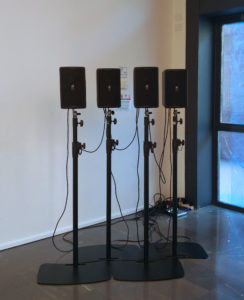 The show not only stays in the intended room, the Sala delle Ciminiere. Passers-by can have a glance from the outside through a new opening: a showcase onto the arcades of the building. Entering the museum, the visitor is welcomed by two installations in the entrance: the sound installation “Toons Tune” by Diego Marcon and “Come fare un buco nell’ acqua” (How to make a hole into water) by Marco Giordano, who covered the glass doors with blue protecting film. Several artworks take possession of the huge foyer. The rooms of the education department are occupied by Adelita Husni-Bey and a reactivation of her children’s workshop in Milan in 2017. After the visit of the exhibition, the visitor is invited to continue in the permanent collection and contemplate the older oeuvres there, perhaps in a new light. The Bolognese Cineteca will show some feature-length films by some of the creatives. During summer there will be every Thursday at 19:30 a guided tour, focusing on one of the artists. Even the catalogue is an artwork, designed by Federico Antonini and Alessio D’Ellena, completed by inserted sheets, created by the participant artists, one of each.
The show not only stays in the intended room, the Sala delle Ciminiere. Passers-by can have a glance from the outside through a new opening: a showcase onto the arcades of the building. Entering the museum, the visitor is welcomed by two installations in the entrance: the sound installation “Toons Tune” by Diego Marcon and “Come fare un buco nell’ acqua” (How to make a hole into water) by Marco Giordano, who covered the glass doors with blue protecting film. Several artworks take possession of the huge foyer. The rooms of the education department are occupied by Adelita Husni-Bey and a reactivation of her children’s workshop in Milan in 2017. After the visit of the exhibition, the visitor is invited to continue in the permanent collection and contemplate the older oeuvres there, perhaps in a new light. The Bolognese Cineteca will show some feature-length films by some of the creatives. During summer there will be every Thursday at 19:30 a guided tour, focusing on one of the artists. Even the catalogue is an artwork, designed by Federico Antonini and Alessio D’Ellena, completed by inserted sheets, created by the participant artists, one of each.
The choice
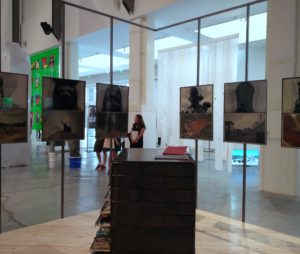 As the main title “That’s IT!” predefines, Italian art is focussed. “IT” is the international two digit country code for Italy and at the same time the domain suffix for Italian websites. Thereof resulted the wordplay with double signification. The subtitle’s first part “On the newest generation of artists in Italy”, defines the age and the country. Moreover, there is the additive “one meter and eighty from the border”, a quote from Bruno Munari, where he reflected about the concept of national or geographic affiliation of artists. A problem, which was also very relevant for Lorenzo Balbi: What is Italian art? If the artist has an Italian passport? If the artist is living in Italy? If the artist had lived in Italy? If the artist is born as artist in Italy? If the artist is born in Italy and lives aboard? By the choice of the artists in the show, the answer to all questions is yes. With regard to globalisation and international exchange, this is only consequent.
As the main title “That’s IT!” predefines, Italian art is focussed. “IT” is the international two digit country code for Italy and at the same time the domain suffix for Italian websites. Thereof resulted the wordplay with double signification. The subtitle’s first part “On the newest generation of artists in Italy”, defines the age and the country. Moreover, there is the additive “one meter and eighty from the border”, a quote from Bruno Munari, where he reflected about the concept of national or geographic affiliation of artists. A problem, which was also very relevant for Lorenzo Balbi: What is Italian art? If the artist has an Italian passport? If the artist is living in Italy? If the artist had lived in Italy? If the artist is born as artist in Italy? If the artist is born in Italy and lives aboard? By the choice of the artists in the show, the answer to all questions is yes. With regard to globalisation and international exchange, this is only consequent.
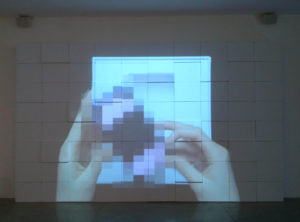 Nowadays, like in the past centuries, purely national art is not existent. A good example is the International Gothic around 1400. Nevertheless, there might be influences in the art of a creative who has a stronger connection to a geographic region than someone who has not. Accordingly, there are native Italian artists who live in a foreign country, like Benni Bosetto (Amsterdam), Guendalina Cerruti (London), Beatrice Marchi (Berlin) and Margherita Moscardini (Jordan). Some are foreigners, but had studied in Italy, like Orestis Mavroudis (Greek living in Athens), Ian Tweedy (German living in New York) and Petrit Halilaj (Kosovan living in Germany, Kosovo and Italy). And many Italians who still live in their native country, several of them had passed some time aboard. Some even have two residences in different states like Michele Sibiloni (Uganda, Italy) Giulio Squillacciotti (Milan, Maastricht) and Margarita Raso (Milan, New York). Moreover, the artists are coming from different regions in Italy.
Nowadays, like in the past centuries, purely national art is not existent. A good example is the International Gothic around 1400. Nevertheless, there might be influences in the art of a creative who has a stronger connection to a geographic region than someone who has not. Accordingly, there are native Italian artists who live in a foreign country, like Benni Bosetto (Amsterdam), Guendalina Cerruti (London), Beatrice Marchi (Berlin) and Margherita Moscardini (Jordan). Some are foreigners, but had studied in Italy, like Orestis Mavroudis (Greek living in Athens), Ian Tweedy (German living in New York) and Petrit Halilaj (Kosovan living in Germany, Kosovo and Italy). And many Italians who still live in their native country, several of them had passed some time aboard. Some even have two residences in different states like Michele Sibiloni (Uganda, Italy) Giulio Squillacciotti (Milan, Maastricht) and Margarita Raso (Milan, New York). Moreover, the artists are coming from different regions in Italy.
The subjects
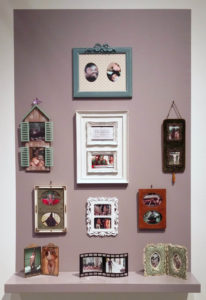 As diverse the choice of media is, so different are the subjects. Nonetheless, there are converging issues. Not surprisingly, since the Millennials have some common experience, which was less present in the preceding generations, who grew up in the cold war. The presented group grew up in a time where certainties and ideologies have been abandoned. In exchange, there are new military conflicts. They effect the daily life, partly because of the increasing real time information, terrorist attacks or refugees. The installation “Blue as gold” by Nicolò Degiorgis which is connected to the publication of a book with the same title, focusses on migration.
As diverse the choice of media is, so different are the subjects. Nonetheless, there are converging issues. Not surprisingly, since the Millennials have some common experience, which was less present in the preceding generations, who grew up in the cold war. The presented group grew up in a time where certainties and ideologies have been abandoned. In exchange, there are new military conflicts. They effect the daily life, partly because of the increasing real time information, terrorist attacks or refugees. The installation “Blue as gold” by Nicolò Degiorgis which is connected to the publication of a book with the same title, focusses on migration.
Due to economic crisis there is a growing precarisation regarding work. Nevertheless, we are permanently animated to consume. Iocose thematises this consumer experience in their video “Launching A New Product”. The accelerated technical evolution might be a benefit for new artistic forms of expression. At the same time, the new technical tools allow constant connection to the internet and with that to social media, which influences the visual vocabulary. Filippo Bisagni confronts in “120 giornate ad Abu Ghraib” film stills from Pasolini’s “Salò, or the 120 Days of Sodom” to photos of torture in the Abu Ghraib prison. With this, he wants to point to the invasion of pictures in our daily life.
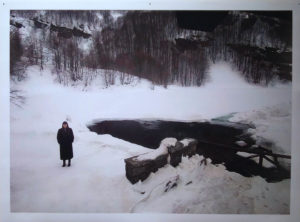 Moreover, the digital hyperactive communication allows an extension of control and surveillance. With the photo series “Self-portraits from surveillance camera” Irene Fenara refers to the omnipresent observation. The uncertainties have become others than at the time of the birth of the oldest represented artists. The current generation provides us less with answers, than a reflexion on the present and an investigation on our contemporaneity. In the video installation “We are Making History” Danilo Correale illustrates the visual possibilities to influence the reception of reality or to create alternative realities.
Moreover, the digital hyperactive communication allows an extension of control and surveillance. With the photo series “Self-portraits from surveillance camera” Irene Fenara refers to the omnipresent observation. The uncertainties have become others than at the time of the birth of the oldest represented artists. The current generation provides us less with answers, than a reflexion on the present and an investigation on our contemporaneity. In the video installation “We are Making History” Danilo Correale illustrates the visual possibilities to influence the reception of reality or to create alternative realities.
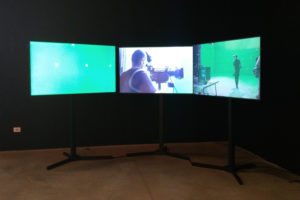 Obviously, previous creatives were also influenced by their time and were often discussed controversy. Numerous artworks were destroyed due to incomprehension, circumstances or a lack of adequate materials. Therefore, today we have only a selection of the former art production. However, often we still can approach it, because of well-known sources like in religious arts. Nowadays, we cannot be sure, that the current art production survive the next 50 years. For example, it is uncertain, if we will have the technical possibilities to play the recordings, because of a lack of suitable equipment. How would Margherita Moscardini’s video installation “1xUnknown (1942-2018, to Fortress Europe with love)” look like, when we no longer have flat screens?
Obviously, previous creatives were also influenced by their time and were often discussed controversy. Numerous artworks were destroyed due to incomprehension, circumstances or a lack of adequate materials. Therefore, today we have only a selection of the former art production. However, often we still can approach it, because of well-known sources like in religious arts. Nowadays, we cannot be sure, that the current art production survive the next 50 years. For example, it is uncertain, if we will have the technical possibilities to play the recordings, because of a lack of suitable equipment. How would Margherita Moscardini’s video installation “1xUnknown (1942-2018, to Fortress Europe with love)” look like, when we no longer have flat screens?
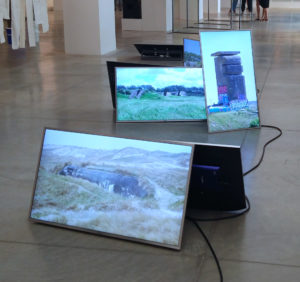 Furthermore, presently used new materials might disintegrate. Besides, our perception is changing rapidly. The visual language of today might be incomprehensible in two or three generations. Our present problems might be replaced by very different questionings. For that reason, it is more than consequent in our fast-moving age, to focus on the current artistic production and involve the artists directly. In doing so, the MAMbo presents a good choice of contemporary art production somehow attached to Italy and reflects the spirit of our time.
Furthermore, presently used new materials might disintegrate. Besides, our perception is changing rapidly. The visual language of today might be incomprehensible in two or three generations. Our present problems might be replaced by very different questionings. For that reason, it is more than consequent in our fast-moving age, to focus on the current artistic production and involve the artists directly. In doing so, the MAMbo presents a good choice of contemporary art production somehow attached to Italy and reflects the spirit of our time.
Artists in the show (sorted by birth year):
Matilde Cassani (1980), Giuseppe De Mattia (1980), Margherita Moscardini (1981), Michele Sibiloni (1981), Riccardo Benassi (1982), Ludovica Carbotta (1982), Danilo Correale (1982), Andrea De Stefani (1982), Giulio Squillacciotti (1982), Marco Strappato (1982), Carlo Gabriele Tribbioli (1982), Ian Tweedy (1982), Invernomuto (Simone Trabucchi, 1982 e Simone Bertuzzi, 1983), Francesco Bertocco (1983), Giovanni Giaretta (1983), Lorenzo Senni (1983), Alberto Tadiello (1983), IOCOSE (Filippo Cuttica, 1983, Davide Prati, 1983, Matteo Cremonesi, 1984 e Paolo Ruffino, 1984), Elia Cantori (1984), Giulio Delvè (1984), Elena Mazzi (1984), Diego Tonus (1984), Calori&Maillard (Violette Maillard, 1984 e Letizia Calori, 1986), Federico Antonini (1985), Alessio D’Ellena (1985), Nicolò Degiorgis (1985), Riccardo Giacconi (1985), Adelita Husni-Bey (1985), Diego Marcon (1985), Ruth Beraha (1986), Elisa Caldana (1986), Roberto Fassone (1986), Francesco Fonassi (1986), Petrit Halilaj (1986), Andrea Kvas (1986), Beatrice Marchi (1986), The Cool Couple (Niccolò Benetton, 1986 e Simone Santilli, 1987), Filippo Bisagni (1987), Benni Bosetto (1987), Lia Cecchin (1987), Alessandro Di Pietro (1987), Stefano Serretta (1987), Giulia Cenci (1988), Tomaso De Luca (1988), Julia Frank (1988), Marco Giordano (1988), Orestis Mavroudis (1988), Valentina Furian (1989), Parasite 2.0 (Stefano Colombo, 1989, Eugenio Cosentino, 1989 e Luca Marullo, 1989), Alice Ronchi (1989), Emilio Vavarella (1989), Irene Fenara (1990), Angelo Licciardello (1990) & Francesco Tagliavia (1992), Caterina Morigi (1991), Margherita Raso (1991), Guendalina Cerruti (1992).

